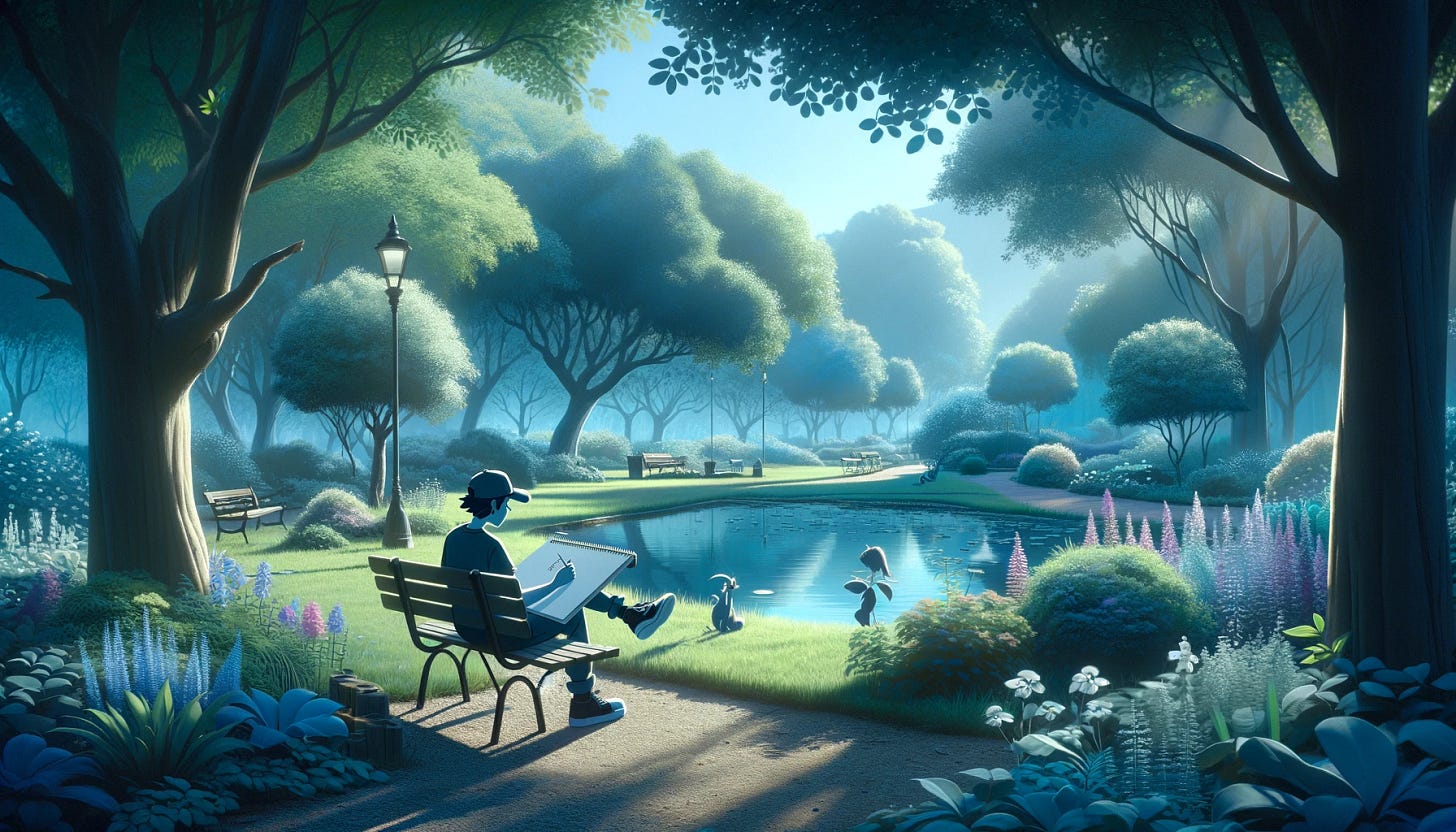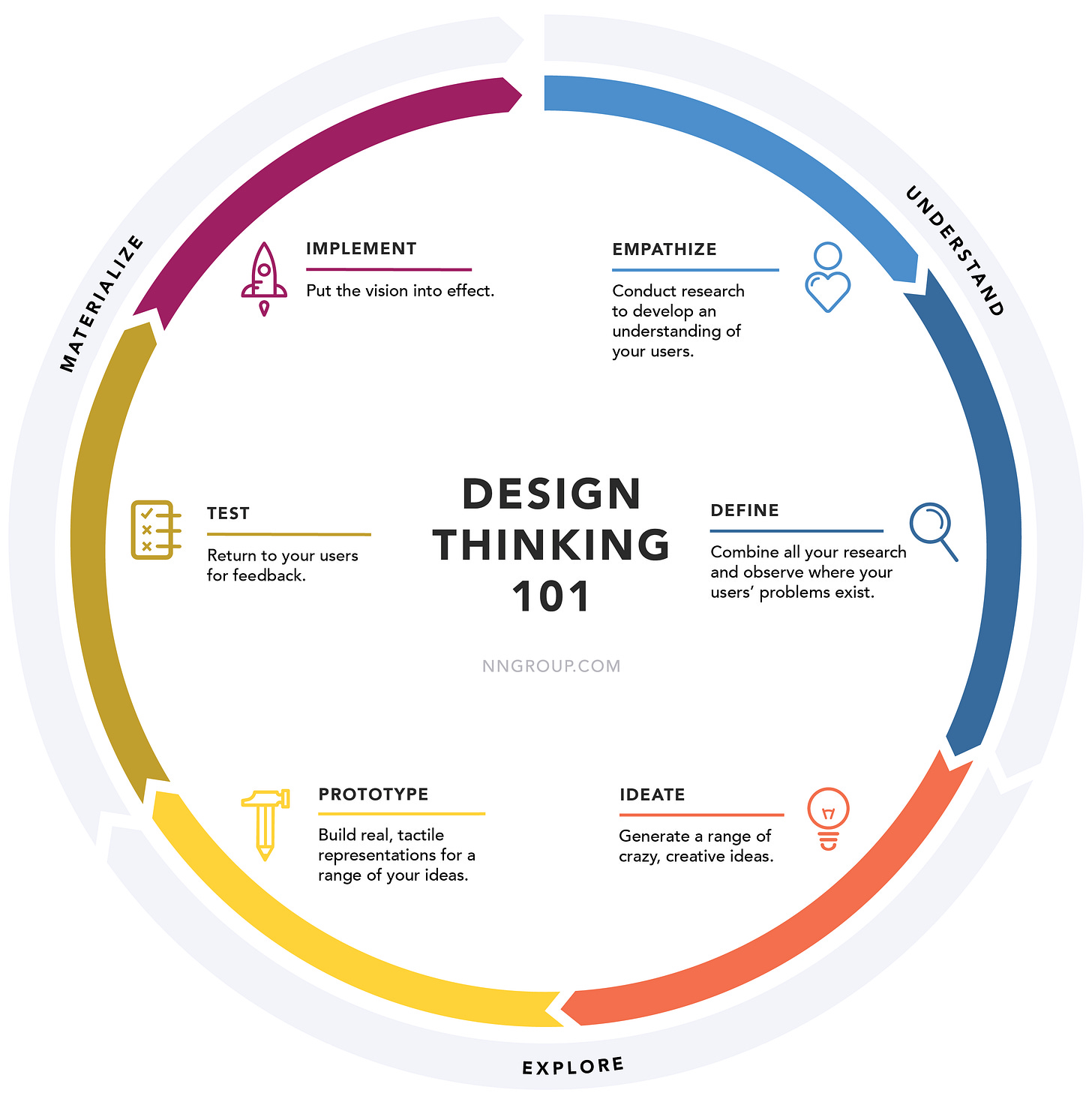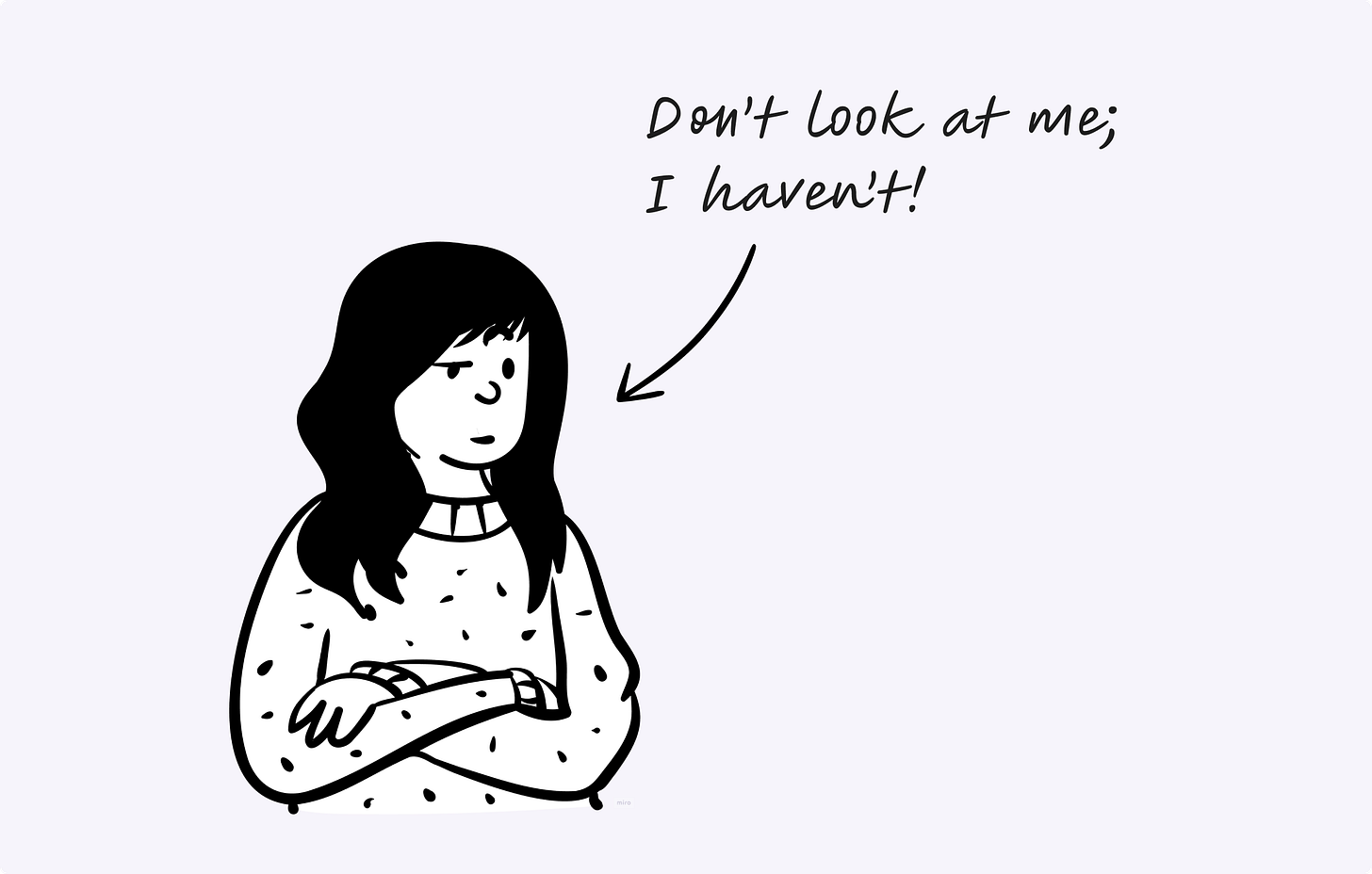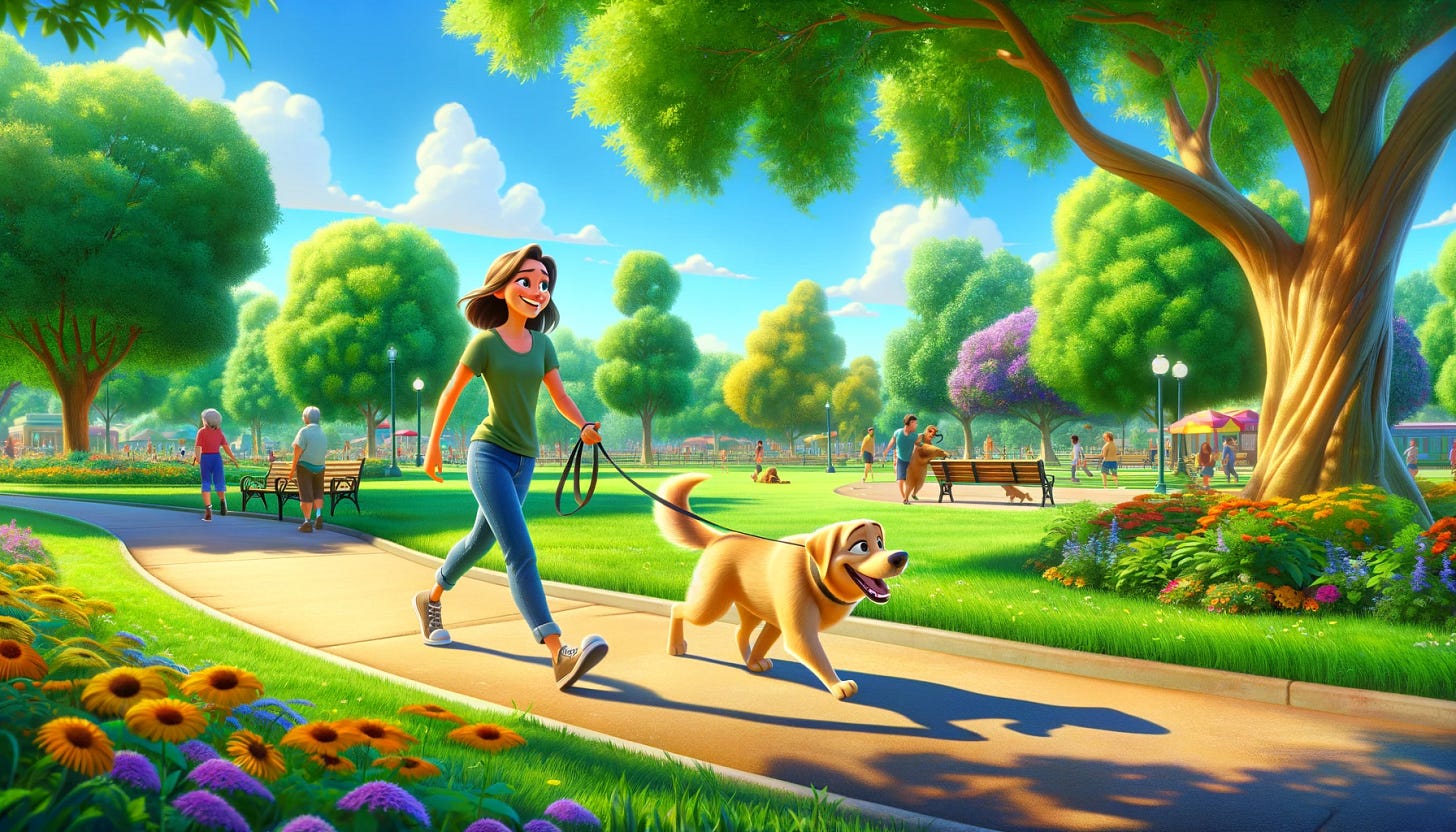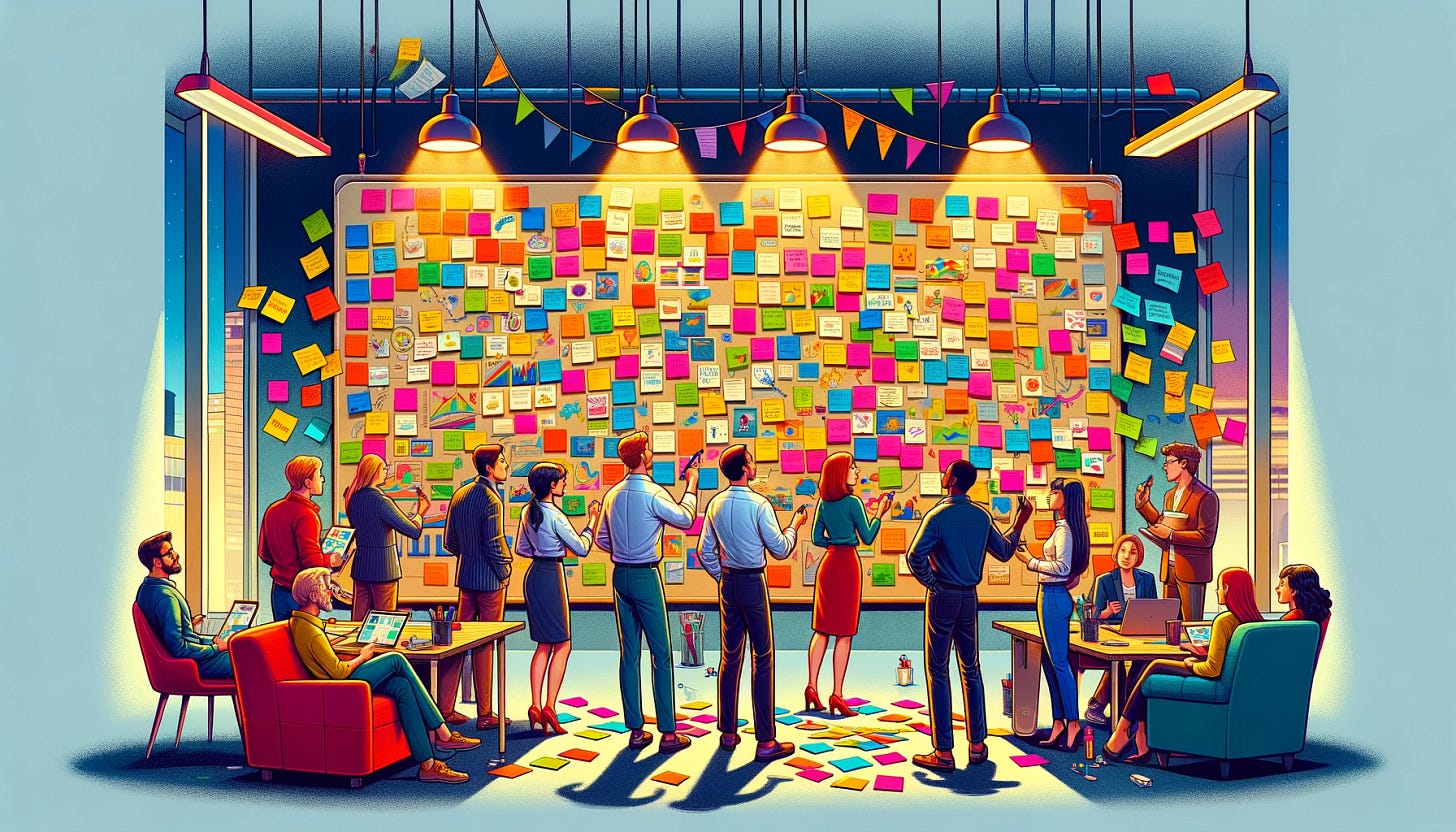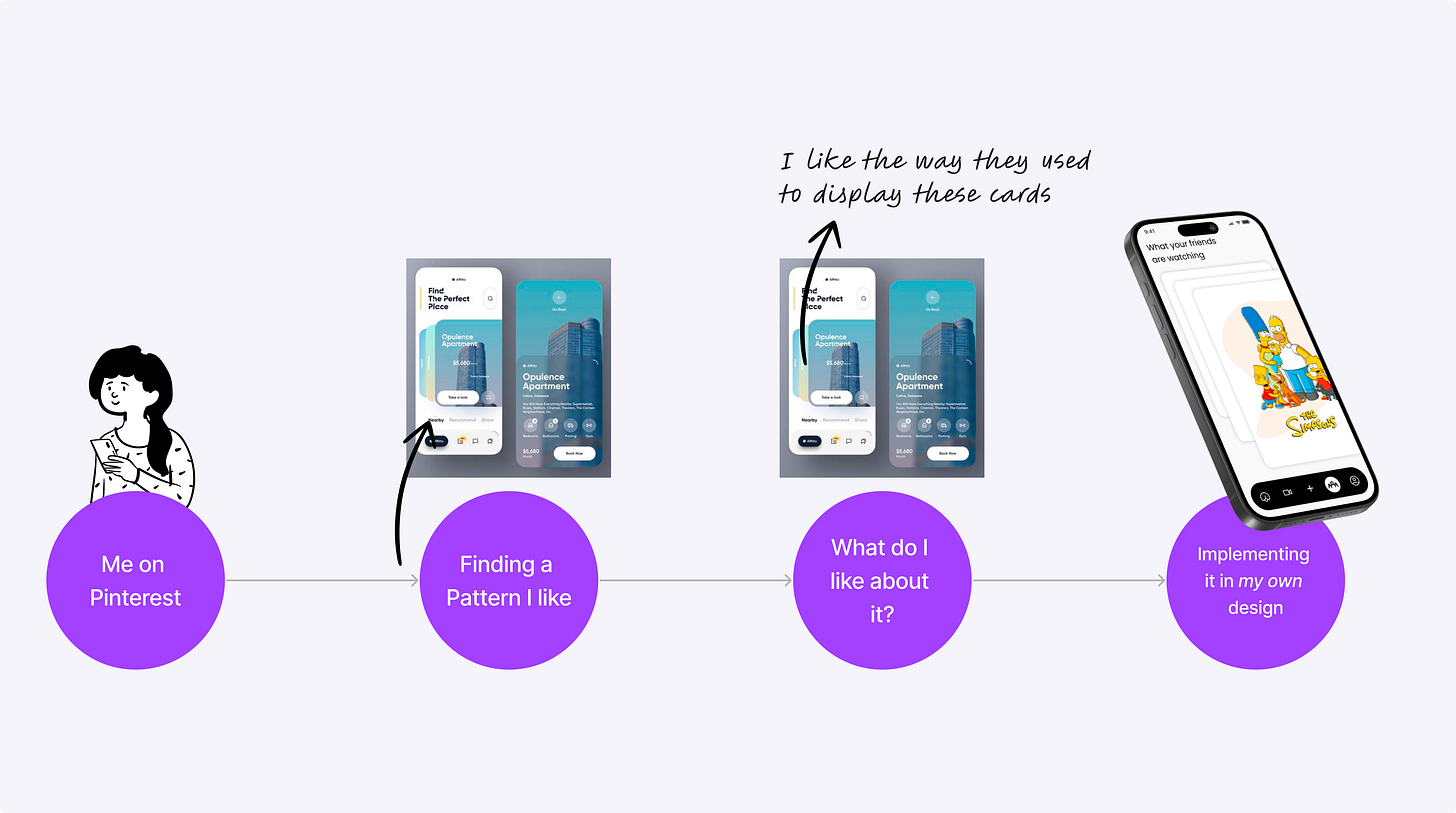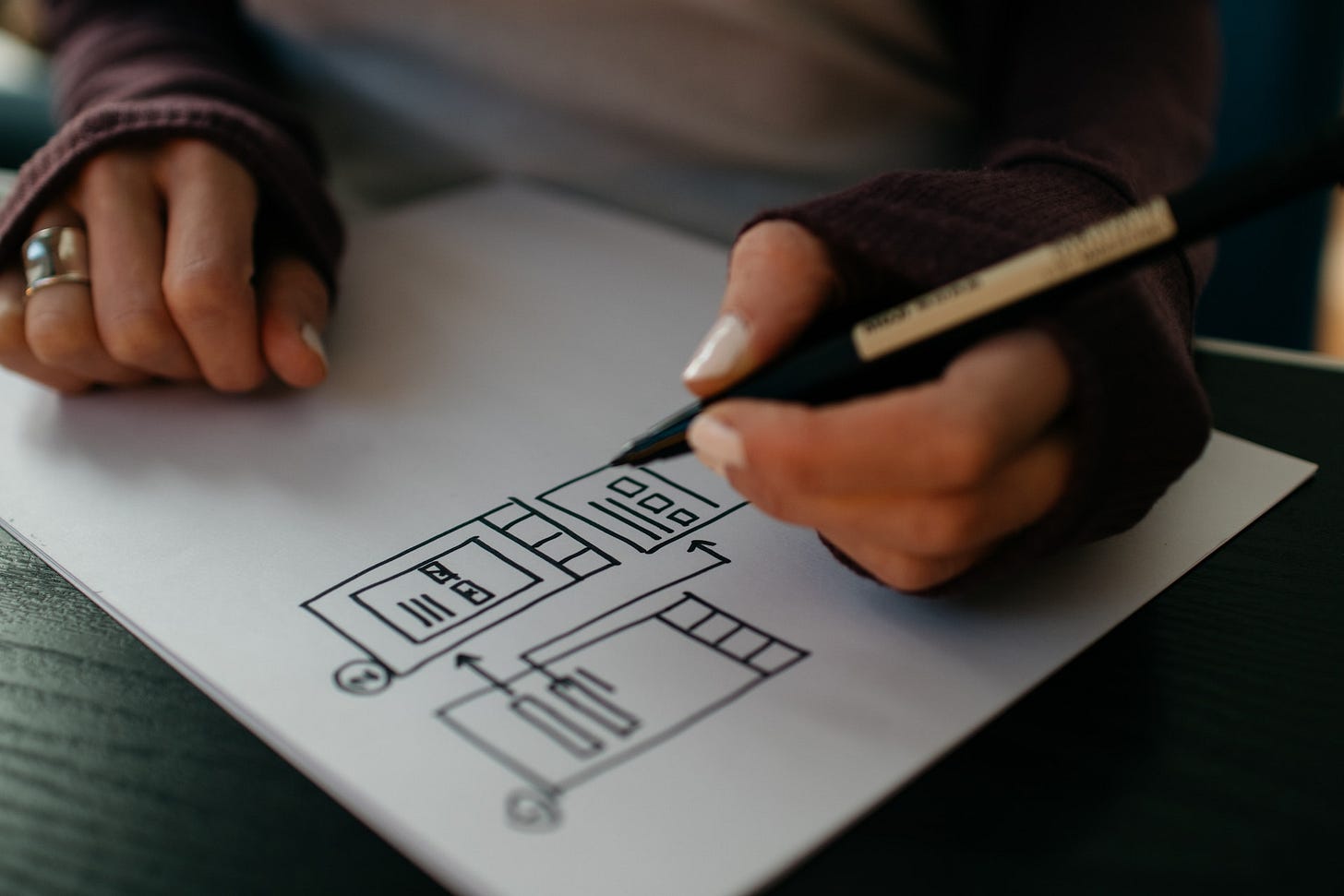🧠 Creative Blocks: Strategies to Unlock Your Creative Potential
🧠 Creative Blocks: Strategies to Unlock Your Creative Potential |
I think we have all been there: needing to finish work, but not knowing how to do it or where to start... let's get you unblocked! In this week’s newsletter we are going to learn about… ❓ What is a creative block, and why does it happen in the first place? 🧩 Understanding the problem: How reframing the project can spark new ideas. 💡 Inspiration Inventory: Maybe you need inspiring content; or no content at all. (I know, controversial!) In addition, we will explore a few strategies to jumpstart your inspiration and get you up and running.
I should’ve finished these designs last week. The handoff should’ve already happened, sparked some questions, curiosity and “how do you expect this to behave?”-type questions. However… here we are. It is 11pm, and I am still scrambling around to get something into my Figma project. Far behind in the delivery, because my brain just doesn’t want to give me what is needed. Motivation. It comes and it goes, and we don’t seem to really know why. Something that is clear to me, is that motivation is (also) environmental, and it has a lot to do with circumstances… sometimes I wake up in the morning not knowing what to do with all that energy… and a few hours later I don’t even remember what I wanted in Figma when I opened it.
But motivation isn’t all circumstantial. A lot of it is mental. Let me explain. ❓ What is a creative block, and why does it happen in the first place?A creative block usually is characterized by two things:
Let’s tackle the lack of ideas first. The design process in and of itself, is centered around a particular user we have found to be our persona. This is a (more or less) constructed person, based on the initial design process, where we evaluate whether or not a hypothetical problem is actually a problem, and what this problem looks like for a small sample of people with experience in the field.
This means, our understanding of the given problem will fuel the development of a persona who is then going to guide us through the problem solving process until we hit the end goal, and have a solution that our users love. So, this is where the lack of ideas comes into play: a lack of ideas usually happens in the ideation stage, when we haven’t truly taken the time to dive into the understandingphase (empathize and define in the Design Thinking framework). (See here)
This, unfortunately, happens a lot. Designers think they understand the problem we are solving, and who we are solving it for, and dive straight into ideating solutions that may or may not be accurate for the given persona. Or, even worse, the persona we are designing for doesn’t really align with our actual persona. Either way… this triggers a poor mental framework, where designers tend to scramble in their Figma files, designing things they think should be there, and forget about the insights they found during affinity maps and HMW questions… Yes, we know it’s wrong. We’ve all done it anyway.
But let’s say you dounderstand who you are designing for. Great, first step accomplished! Now, let’s talk about the second hurdle: lack of motivation. Lack of motivation feeds off of the lack of ideas from earlier, and magnifies it into a pool of believe systems, drowning the designer in a perpetual state of "I need to get this design done, but I don’t know where to start".
And because I don’t know where to start, I just am going to organize my desk, do the laundry, walk the dog, use an old toothbrush to clean the dish drying rack, and a toothpick to clean dust and cookie crumbs accumulated between (and under!) the keys of my Keyboard. And whilst all these bursts of cleanliness and energy might temporarily put you in a better mood, it does not solve the situation you are dealing with: You understood the problem, but haven’t taken the time to analyze how to solve it. 🧩 Understanding the problem: How reframing the project can spark new ideas.What problem are we talking about? Well… ideally, your project is based on the need or goal of a user group, who are currently experiencing a certain pain point (or more than one). I say ideally, because sometimes you’ll find design solutions that seem to lean on the whim of a designer who decided that it would be great to redesign Instagram or Spotify without thinking about the goal they are trying to achieve. (Guys: the audio player inside of Spotify doesn’t need to be redesigned). As a design mentor, I see this a lot: problem statements often are phrased as a solution, because we, as designers, want to design a certain feature. See an example 👇
Not because it’s necessary, but because we think it’s necessary (or cool, or innovative, or whatever…). If you would like to read about problem statements, let me by answering to this email. Whenever we fall into the trap of the lack of ideas and lack of motivation, we can almost always trace our steps back to the same culprit: the problem statement.
To begin with, this problem might be a hypothesis; validated through secondary and primary research, competitive analysis, affinity mapping, HMW questions, storyboards and a whole host of other strategies and exercises, until we land somewhere where we deeply understand:
And now we can re-evaluate our perspective, as well as our proposed solution, and potentially move forward with it. 💡 Motivation Inventory: Maybe you need inspiring content; or no content at all.You probably have heard of all these strategies that are meant to unblock you when you don’t know how to handle yourself. Things like stretching, journaling, going for a walk, getting some coffee, repeatedly opening and closing the fridge only to realize that nothing new is in there. And those might work for you, and if so, then go do that, it’s totally fine. Occasionally they do work for me too. You might also think about looking at what others are doing, to get some inspiration. I do tell students to go find out what others are working on, check design patterns you might be interested in, mix and match them, and make them your own (not a fan of plagiarism, and neither should you be). Here are some tips and strategies to implement:
Bottom lineDesign work, or any creative work in general, will likely be accompanied by mental or creative blocks sometimes, and that is completely normal. Making sure we understand this, and find strategies out of there, is the important part. Good luck, and happy designing. I look forward to your opinion. Please respond to this email and let me know what your opinion is. |
